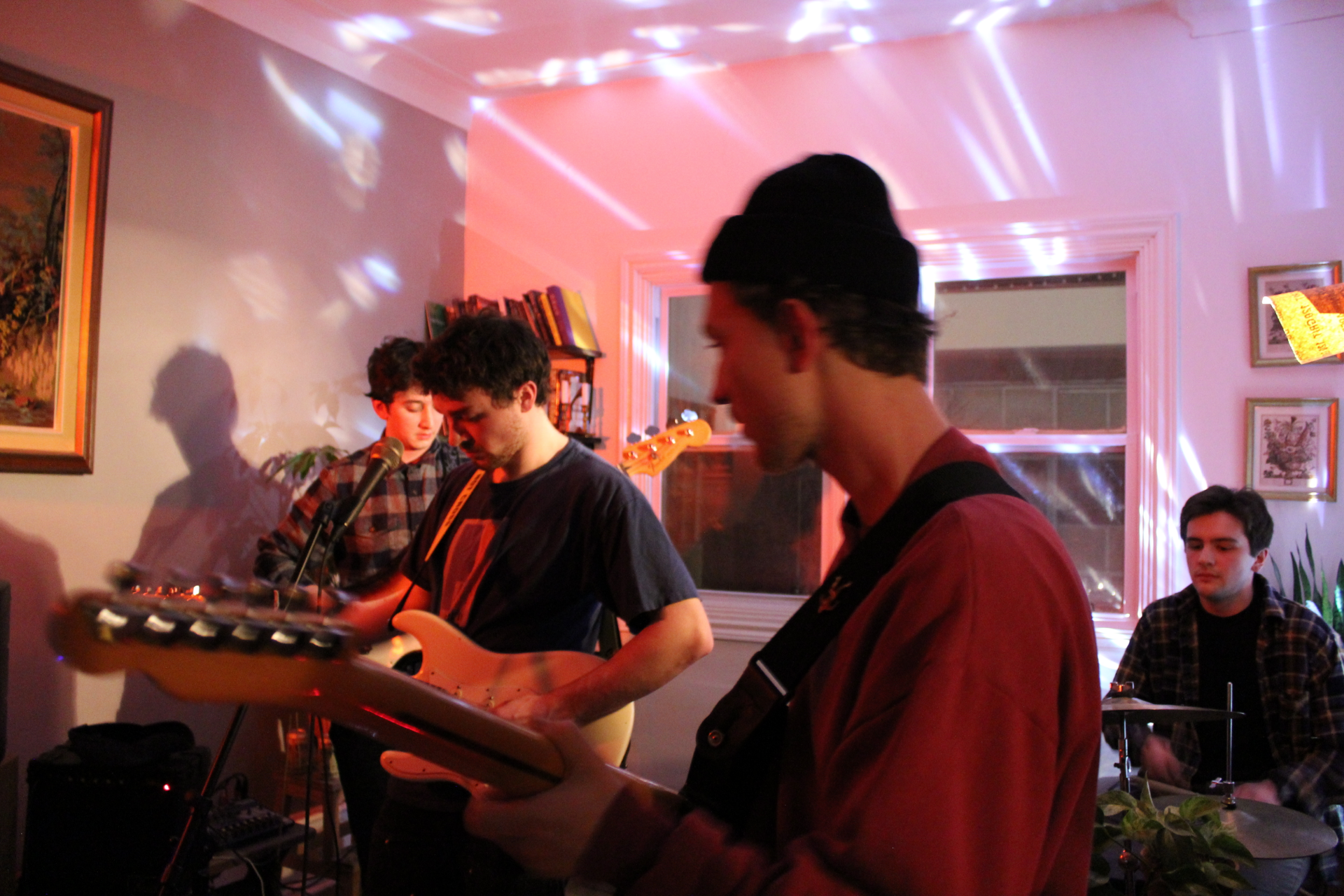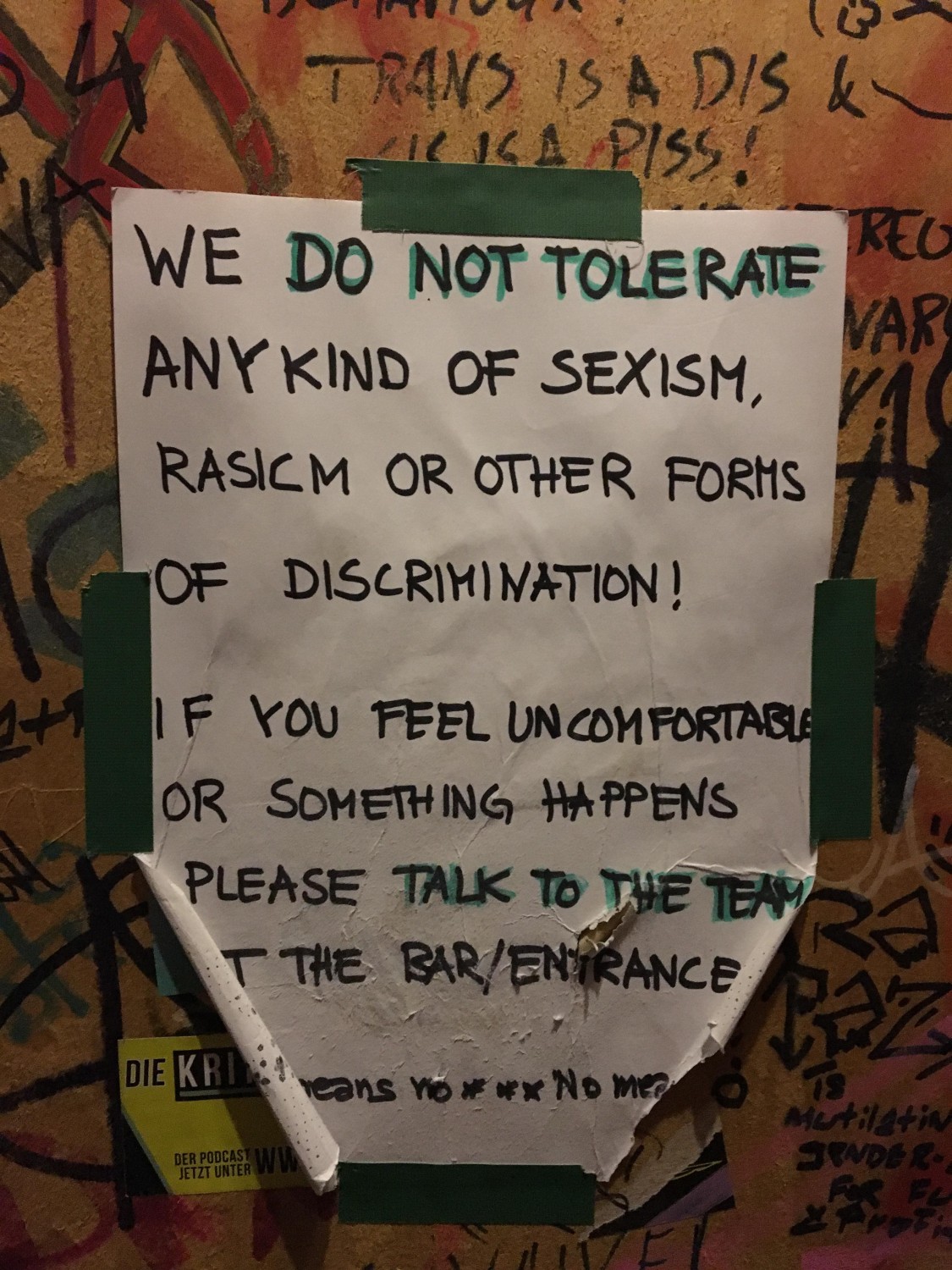DIY venues are becoming safe spaces: and that's OK

By: Matt Comeau
*Originally Published in Yer Scene Vol. 25, 2020*
DIY communities and local scenes have been a staple of the modern music industry for decades. They’re instrumental as places for artists to foster success and build followings, as well as being integral to local art infrastructure in cities.
Lately, I’ve begun to notice that the venues I frequent have started to become more than just that. It’s not just about being a place to throw shows and have fun, to give platforms to underground music and to see the next up and comers. It’s beginning to become birthplaces for sustainable, thoughtful communities; environments that are non-judgmental, supportive and free. For lack of a better term, they’re safe spaces.
This isn’t anything ground-breaking. If anything, it’s just a more pronounced step in the relationship that art has with mental well-being. It just so happens that this extends to the cramped basements, sweaty crowds, and rickety stages that can only hold the weight of the few with the courage to be vulnerable for all of us.
At the end of the day, this is what DIY is all about: vulnerability in welcoming enclosures.
In order to further explore this connection, and to prove that it wasn’t just my own bias or perception, I decided to reach out to some of friends in DIY communities worldwide. I wanted to understand what DIY means to the promoters, artists and show-goers that aren’t just in my circle, and to hear their experiences with local scenes being welcoming spaces for everyone to enjoy, away from the problems of the world.
One of the continuous topics of conversation that arose during my interviews was *how* DIY communities take the initiative and ensure that these environments remain as intended: safe.
*Originally Published in Yer Scene Vol. 25, 2020*
DIY communities and local scenes have been a staple of the modern music industry for decades. They’re instrumental as places for artists to foster success and build followings, as well as being integral to local art infrastructure in cities.
Lately, I’ve begun to notice that the venues I frequent have started to become more than just that. It’s not just about being a place to throw shows and have fun, to give platforms to underground music and to see the next up and comers. It’s beginning to become birthplaces for sustainable, thoughtful communities; environments that are non-judgmental, supportive and free. For lack of a better term, they’re safe spaces.
This isn’t anything ground-breaking. If anything, it’s just a more pronounced step in the relationship that art has with mental well-being. It just so happens that this extends to the cramped basements, sweaty crowds, and rickety stages that can only hold the weight of the few with the courage to be vulnerable for all of us.
At the end of the day, this is what DIY is all about: vulnerability in welcoming enclosures.
In order to further explore this connection, and to prove that it wasn’t just my own bias or perception, I decided to reach out to some of friends in DIY communities worldwide. I wanted to understand what DIY means to the promoters, artists and show-goers that aren’t just in my circle, and to hear their experiences with local scenes being welcoming spaces for everyone to enjoy, away from the problems of the world.
One of the continuous topics of conversation that arose during my interviews was *how* DIY communities take the initiative and ensure that these environments remain as intended: safe.

Bionca Maldonado and Derek Hibbard from Saint Louis indie-punk group The Centaurettes and co-owners of the DIY space Wolfpussy talk about how on “all show posters, we put ‘ask a punk’ [instead of listing our address]…that’s just a safety net for us in the sense that if [we] don’t know that person or find them shady, [we] won’t be giving them our address.”
The use of this advertising is both interesting and telling, as it shows the progression of DIY as “exclusive” in the sense of harm prevention. By having people take the initiative to ask where the gig is, it helps screen individuals who may be harmful to the community, or who may not necessarily respect the space. While it isn’t revolutionary, it does show a way in which language originally used to show the “underground” side of local music is now being used to promote inclusivity and safety.

Dana Eve, Saint Louis-born English teacher in Berlin by day, German DIY supporter by night, also comments on how the scene in Europe is employing its own methods for patrons of all walks of life. “A big reason I go to shows is for the sense of belonging and community. As someone who is now clean and sober, I definitely don’t want to be in a space where I feel judged for not drinking…some venues don’t allow smoking in the main room out of concern for straight edge bands and nonsmokers…[they] offer water, Mate, or soda at the bar, and anyone I know is either chill about it, supportive or doesn’t care at all.”
This is another shift in the public perception of DIY subculture. While genres like punk, emo and hardcore were sometimes associated with drug use and drinking in the past, it’s refreshing to see that less established venues are taking the initiative to foster supportive environments. Creating a space that is non-judgmental and welcoming of all walks of life, while ensuring safety is one thing, but going the extra mile to ensure that individuals recovering from addiction and sober is another. This is something simple that can really set the tone for a gig, oftentimes for the better.
It becomes far less intimidating to interact with folks and artists without the pressure of *needing* to drink, smoke weed etc. This is why DIY thrives across the globe; it is a lot easier to engage with each other at local shows than it is at big venues. You don’t have the crowds, the discomfort, and the daunting pressure of everyone around you.
“People [in the DIY scene] do want to get out and meet other people, and it’s an easy way to network” Bionca remarks thoughtfully “It is everyone’s responsibility to build each other up”.
Bionca’s point hits on something that I think goes largely unexplored in the conversation of DIY communities. Aside from the role they play as a catalyst for art, they are also a point of connection for people; you can be sure that everyone has one thing in common: to get to the gig. It exists as a forum for growth in music that wouldn’t happen as organically in larger, more officiated settings.
“I brought strangers together. Some people who would never have interacted with each other are in the same room…Seeing people care in the scene is heartwarming”. States Jesse Alarcon, owner of Glue Gun Records, musician and long-time promoter in the Greater Toronto Area. This is perhaps the most important part of DIY. We’re all there for the same thing.
A third aspect of this relationship between DIY and safe spaces is the role it plays in addressing the mental health of the artists and supporters of the scene. Last May, a study funded by digital distribution platform Record Union found that 73% of independent musicians suffer from symptoms of mental illness. While the statistic itself may seem staggering, it’s not completely surprising. Artists struggle with a plethora of hurdles including access to finance, lifestyle, living arrangements, finding success and supporting themselves. There doesn’t seem to be a viable option. It’s in these instances that artists lean on each other and the communities they’re a part of. We can all relate to each other on a base level and help each other through the rough parts.
“As far as struggling with mental health, I think it is common in the scene…most people I know have shit they’re working through. Maybe that’s why we feel the pull to come together and to create things. I know it makes me feel better” Dana says on the subject of mental health in the scene in Berlin. “You’re not alone out there. [DIY] provides that safe space where people get you. I feel comfortable [in those settings], maybe more comfortable than talking to my family” Jesse says pensively. Both Dana and Jesse point out that DIY can be a place for people to be themselves, which they may not be able to do at home, or really anywhere else.
“For me, making music and seeing my friends perform fills a hole inside me that no drug, drink or person could ever do…That’s my goal in life; to make someone feel a little less lonely for 3 and a half minutes” says Bionca on finding mental peace in her scene. “These memories get me through a lot of hard times. I love looking back at these times that I shared with the most special people in my life”.
This is the essence of DIY as it stands now. It’s not just about the underground and subverted aspects of music that inhabit the crevices of cities. No longer is there an element of exclusivity for the sake of “artistic integrity,” or communities that breed pockets of oppression, prejudice and vitriol. Sure, these spaces and these individuals will always exist: sometimes hidden, sometimes apparent, but I think the paradigm has changed overall.
People worldwide are working diligently to combat these preordained assumptions. They ensure general safety, promote sober environments (in some cases), and actively work to create a community where people can express their identity, feelings and experiences.
From Toronto, Saint Louis, Berlin to my (current) home in Montreal, it’s clear this isn’t just a local thing. I look forward to seeing local music scenes become more than just “where artists start to become big”. There’s a reason why these communities continue to exist, and it’s the life-force of the people behind them, the artists that perform, and the folks that see them.
DIY isn’t going away any time soon, and neither are the people that make it. Where there’s a house, there’s a gig, and where there’s a gig, there’s a space for everyone who respects it.